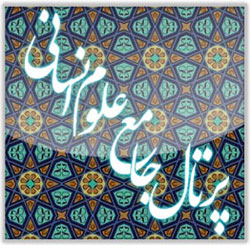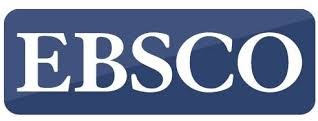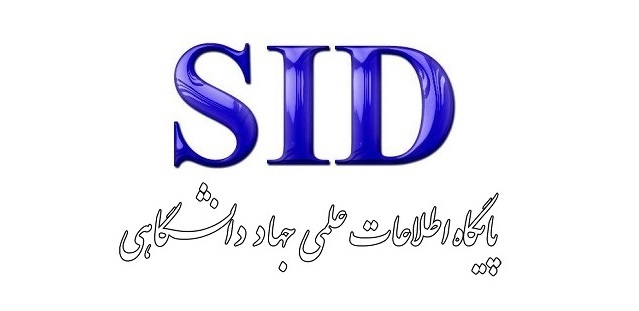واکاوی جایگاه نمادهای هویتی شهرها بر کیفیت زندگی شهری
کلمات کلیدی:
هویت, هویت شهری،, نماد, فرهنگ, محیطچکیده
شهرها همواره موجب پدید آمدن هویت، فرهنگها، آداب، رسوم در جوامع مختلف میشوند. هویت در شهرها موجب همبستگی و توسعه مشارکت اجتماعی افراد میگردد. فرهنگ تحت عناصری زمینه رشد جوامع را هموار مینمایند. هویت شهرها گاهاً متأثر از نمادها و نشانهها در شهرها پدید میآیند. هویت و نمادهای شهری از نخستین شهرها که بیش از 3000 هزار سال قدمت دارد تا به امروز زمینه ساز رشد و توسعه شهری بوده است. جهت دستیابی به یک مدل تحلیلی در طراحی نمادها و نشانههای شهری و نیز ارتقای کیفیت زندگی شهری برای ساکنین، ضروری است که ابعاد و مؤلفههای مرتبط با ابعاد هویت و شناسایی مؤلفههای نماد شهری، شناسایی گردند. پس از بحث و بررسی در این خصوص، عوامل کمی و کیفی طراحی نمادهای شهری در جهت توسعه ارتقای کیفیت زندگی شهری و سرزندگی ساکنین تبیین میگردند. در همین راستا این پژوهش به معرفی ابعاد هویت شهری، هویت، نماد و ابعاد آنها را مورد واکاوری قرار میدهد. جهت جمعآوري اطلاعات در اين پژوهش، از شيوه مطالعات اسـنادي و کتابخانهاي شامل مطالعه کتابها و مقالات مرتبط استفاده شده است و با توجه به ماهیت موضوع، به روش تحقیق توصیفی- تبیینی مطالب مورد بررسی قرار گرفته است. نتایج پژوهش و پیشنهادات نشان میدهد، بهرهگیری از مفهوم هویت و شناسایی ماهیت مؤلفههای نمادهای شهری شامل معماری، اجتماعی، فرهنگی، محیطی و انسانی و ابعاد آن بر کیفیت زندگی ساکنین شهرها میافزاید.
دانلودها
مراجع
1. Gatt-Diner M. Key Concepts in Urban Studies. Tehran: Translated by Hatami Nejad, Hossein, Barati Nia, Abdol-Motaleb, Toseh Ketabdar Publications; 2014.
2. Behzadfar M. City Identity: A Look at the Identity of Tehran: City Publishing Institute, Tehran; 2011.
3. Fekouhi N. Place-Based Identity and Identity Crisis in Urban Space: A Case Study of Two Residential Complexes in Tehran. Iranian Anthropology Researches. 2013:7-18.
4. Zargami I. Theory of Social Sustainability and Residential Complexes: Tehran: Shahid Rajayi University Publications; 2017.
5. Naqizadeh M. Islamic Architecture and Urbanism (Theoretical Foundations): Raheyan Publishing Institute, Tehran; 2006.
6. Rezghi M, Rezghi K. Analysis of Urban Spaces: First and Last Publications, Tehran; 2016.
7. Habibi M. From Shahr to City: University of Tehran Publishing Institute; 2008.
8. Pakzad J. Theoretical Foundations and Processes of Urban Design: University of Tehran Publications, Tehran; 2010.
9. Hosseini M, Dejdaar O, editors. Investigating the Effective Indicators on Place Identity in Social Housing: A Case Study of Mehr Housing, Golha, Hamadan. International Conference on New Horizons in Civil Engineering, Architecture, and Urban Development; 2019.
10. Mahdavi Nejad MJ. Identity Symbols of Tehran: Century Architecture Art, 1st Edition, Tehran; 2014.
11. Hajializadeh J, Pour Mohammad A. Pedestrian-Oriented Urban Spaces: Tehran: Professors' Publications of the University; 2018.
12. Lynch K. Theoretical Foundations and Processes of Urban Design: University of Tehran Publications, Tehran; 2008.
13. Lynch K. The Image of the City: Translated by Manoochehr Mazini, Tehran: University of Tehran Publications; 2008.
14. Akhavan M. Representation of Urban Identity-Forming Elements in Travelogues: A Comparative Study of Tehran and Counties of Tehran Province. Scientific-Research Journal of Social Studies and Research in Iran. 2013;1(4):75-100.
15. Deheshiri MR. Media and Culturalization. Cultural Research Quarterly. 2009;2(8).
16. Burkhardt T. Meanings of Mirror Symbols: Translated by Ahmadreza Ghaem Maghami, Compiled by Mostafa Dehghan, Tehran; 2005.
17. Berten H. The Idea of Postmodernism: London: Routledge; 1995.
18. Noghrehkar A. An Introduction to Islamic Identity in Architecture and Urbanism: Ministry of Housing and Urban Development Publishing Institute, Tehran; 2008.
19. Ashouri D. Definitions and Concepts of Culture: Agah Publishing Institute, Tehran; 1978.
20. Baali F. Society, State, and Urbanization: Sociological Thought of Ibn Khaldun: Translated by Gholamreza Jamshidiha, Tehran: University of Tehran Publications; 2003.
21. Mortazavi S. Environmental Psychology and Its Applications: Tehran: Shahid Beheshti University Publications; 2001.
22. Alexander C. The Timeless Way of Building: Translated by Mehrdad Qiyumi Bidahandi, Tehran: Rozaneh Publications; 2018.
23. Alnasr J. Evaluative Mental Image of the City: Translated by Masoud Asadi Mahalchali, Tehran: Samin Publications; 2014.
24. Lang J. Creating Architectural Theory: The Role of Behavioral Sciences in Environmental Design: Translated by Alireza Aini Far, Tehran: University of Tehran Publications; 2007.
25. Soltani S, Khaki A, editors. Analyzing Readability in Workspaces Using Analytical Syntax Method: A Case Study of Administrative Building in Pre-Construction Phase. National Conference on New Theories in Architecture and Urban Planning; 2014: Islamic Azad University, Qazvin Branch.
26. Rostami Parizad R. The Role of Technology in the Quality of Architectural Spaces and Its Impact on Sustainable Architecture: Shiraz: Architectural Studies; 2019. 1-6 p.
27. Vermas P, Kross P. An Approach to the Philosophy of Technology: Translated by Mostafa Taghavi, Fakh Kakaei, Tehran: Ame Publications; 2012.
دانلود
چاپ شده
ارسال
بازنگری
پذیرش
شماره
نوع مقاله
مجوز
حق نشر 2025 خسرو پورجوان (نویسنده)

این پروژه تحت مجوز بین المللی Creative Commons Attribution-NonCommercial 4.0 می باشد.









